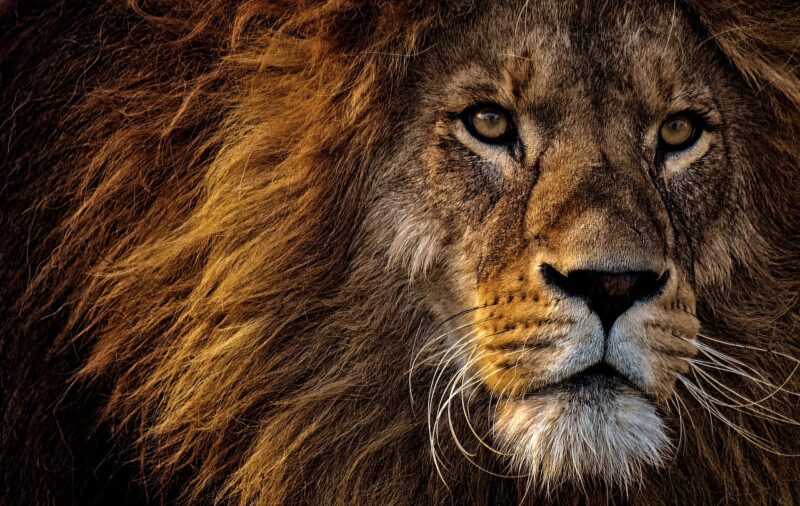How Lions Are Affected by Climate Change: The Future of Big Cats in a Warming World
November 13, 2024

The majestic lion has long been revered as the king of the jungle, a symbol of strength and power. However, as climate change rapidly transforms our planet, this iconic species faces unprecedented challenges that threaten its survival. The intricacies of how lions are affected by climate change reveal not only the immediate impacts of a warming world but also the long-term implications for the future of these magnificent creatures.
1. Understanding Climate Change and Its Effects on Ecosystems
Climate change refers to long-term changes in temperature and typical weather patterns in a place. It is caused primarily by human activities, particularly the emission of greenhouse gases from fossil fuel consumption, deforestation, and industrial processes. As global temperatures rise, ecosystems around the world experience significant alterations, prompting shifts in species distribution, changes in food availability, and escalating threats to biodiversity. For lions, these changes can disrupt their natural habitats and affect their prey populations.
2. Habitat Loss and Degradation
Lions thrive in savannas and grasslands, regions that are increasingly susceptible to the effects of climate change. As temperatures rise and rainfall patterns shift, habitats suitable for lions are rapidly changing.
– Drought and Water Scarcity: Increased temperatures lead to prolonged droughts, reducing the availability of water in their habitats. Lions rely on water sources, such as rivers and watering holes, for drinking and hunting. Diminished water sources can force lions into closer proximity with humans as they seek alternative water supplies, leading to increased human-wildlife conflict.
– Shrinking Territories: As their habitats degrade, lion populations are often forced into smaller, fragmented areas. This loss of territory can lead to increased competition for resources, decreased prey availability, and heightened stress among individuals.
3. Prey Species and Food Web Disruption
Lions are apex predators, relying on a stable population of herbivores for sustenance. Climate change disrupts the food web, which has profound implications for lion populations:
– Impact on Herbivore Populations: Many prey species, such as zebras, wildebeests, and antelopes, are equally affected by climate changes, leading to potential declines in their populations. Drought and habitat changes can alter migration patterns and breeding cycles, which in turn affects the food supply for lions.
– Shifts in Species Distribution: As temperature and weather patterns change, prey species may migrate to more suitable habitats. If lions are unable to follow or adapt to new hunting grounds, it may lead to malnutrition and starvation among lion populations, compromising their health and reproductive success.
4. Increased Human-Wildlife Conflict
With diminishing natural habitats and prey availability, lions may venture closer to human settlements in search of food and water. This intersection of lion territory and human habitation can lead to confrontations, often resulting in dire consequences for both parties:
– Livestock Predation: Lions often attack livestock, harming rural communities that rely on these animals for their livelihood. In retaliation, humans frequently resort to lethal measures to protect their livestock, leading to a decline in lion populations.
– Conservation and Policy Challenges: These human-wildlife conflicts present significant challenges for conservationists seeking to protect lions. Efforts to mitigate conflicts such as compensation programs, community education, and innovative livestock protection strategies are crucial to ensuring lions’ survival in a warming world.
5. Health Risks and Disease Vulnerability
The impact of climate change is also felt through increased health risks and diseases in lion populations:
– Heat Stress: As temperatures rise, lions face risks associated with heat stress, particularly in already hot regions. Elevated body temperatures can lead to dehydration, reduced activity levels, and ultimately decreased survival rates.
– Increased Disease Transmission: Changes in precipitation and temperature also favor the spread of diseases that can affect lions, such as feline immunodeficiency virus (FIV) and canine distemper virus (CDV). Higher temperatures can create more hospitable conditions for disease vectors like ticks and mosquitoes, which can further jeopardize lion health.
6. Conservation Strategies Amidst Climate Challenges
As climate change poses a growing threat to lions and their ecosystems, conservation strategies must evolve to address these challenges effectively:
– Habitat Protection and Restoration: Preserving existing lion habitats and restoring degraded areas are essential for ensuring these majestic animals have the space and resources needed to thrive.
– Monitoring and Adaptation: Implementing robust monitoring systems to track lion populations, health, and habitat conditions will help conservationists better understand how climate change affects these species and adapt strategies accordingly.
– Community Engagement: Engaging local communities in conservation efforts and enabling them to participate in sustainable practices can help mitigate conflicts and promote coexistence between humans and lions.
– Climate Resilience Planning: Incorporating climate change projections into conservation planning will help ensure that strategies remain effective amidst changing environmental conditions.
7. Conclusion: A Collaborative Future for Lions and Humans
The future of lions in a warming world is uncertain, but through collaboration and innovative strategies, there is hope for their survival. Educating communities, protecting natural habitats, and promoting sustainable practices are essential for coexisting with these magnificent big cats. Only by addressing the multifaceted challenges posed by climate change can we ensure that future generations will continue to hear the roar of the king of the jungle.
As we explore ways to combat climate change, we must remember the delicate balance of natural ecosystems and the vital role that apex predators like lions play in maintaining that balance. By safeguarding their future, we protect not just lions but the rich tapestry of life that depends on a healthy planet.







